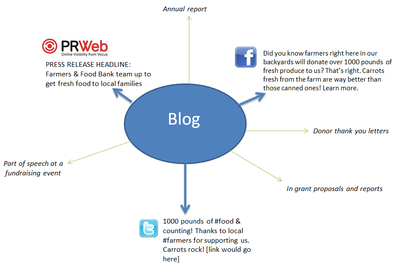Akhtar Badshah is Microsoft’s Senior Director of Global Community Affairs. He’s also an all-around super duper smart dude. I have come to expect that my brain will cramp when I hear him present. He makes you think about things differently. Harder. More intentionally and intently than you might otherwise.
On Friday, February 4, 2011, he did not disappoint. He delivered his brain-cramping awesomeness at the Tech for Good Summit, hosted by Microsoft and NPower Seattle.
And Akthar was just the opening act!
Beth Kanter, co-author of The Networked Nonprofit and all-around nonprofit technology and social media rock star, then delivered 75 minutes of pure genius.
I won’t be able to do her training justice, but will share a few things that struck me as particularly useful and delightful:
- Failure is success: Organizations succeed because they have first failed. This seems counter-intuitive but it makes a ton of sense, especially when it comes to social media. Everyone is learning as they go. Create organizational cultures that encourage failure and you will, in the end, succeed. (Dan Pallotta would have vigorously nodded throughout much of her presentation.)
- Joyful funerals: If you create a culture that encourages failure a la #1, you are exponentially more likely to take time to figure out what worked and what didn’t. If you celebrate the failures by having joyful funerals for them, you won’t do it again. Ever. Because it’ll be dead, buried and gone. The old “Because this is how we do things” has no place in this brave, new world of joyful funerals and fabulous failings. Downright liberating!
- Measure what Matters: This isn’t exactly revolutionary…or is it? How many of us really, truly look at indicators that say something of substance about whether social media is advancing our mission? By getting rigorous, we’ll get returns. (I was psyched to read in Clay Holtzman’s PSBJ post that social media measurement will be the focus on Kanter’s next book. Hooray!)
Lots of the resources shared in-person are available on-line (thank goodness!). Here are a few:
IMHO, Tech for Good was beyond good–it was fabulous!
Any other thoughts or take-aways from folks who participated in-person or on-line via the virtual sessions?
